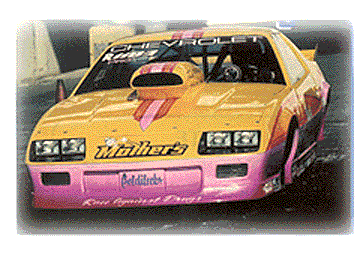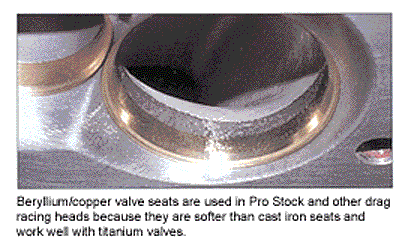
One thing every drag racer wants is to go faster – even bracket racers. There are lots of ways to shave tenths of seconds and even whole seconds off an elapsed time. It all comes down to how much money the racer is willing to spend in his quest for speed.
One way to go faster is to improve the breathing efficiency of the engine. Installing a hotter camshaft with more valve lift and duration will add more power, but to maximize the engine’s breathing potential the cylinder heads also have to be reworked to take full advantage of the increased valve opening and timing. Stock cylinder heads can be ported and massaged to a certain extent but eventually you run out of metal. So when a racer gets serious about wanting to make more power, the stock heads are usually replaced with a good set of aftermarket performance heads.
All of the engine builders we interviewed for this article said that drag racers today have a great selection of aftermarket performance heads from which to choose. Most of these heads are affordably priced and deliver excellent performance gains right out of the box. Of course, there’s always room for improvement. But with heads that are fully CNC machined with a state-of-the-art profile, there’s not much more to do except to finish the seats and assemble the heads. Most of the builders we spoke to said they prefer to work with bare heads rather than fully assembled heads so they can have more control over the finished product.
The amount of work and money that goes into a set of heads will obviously vary a great deal depending on the drag racing class. Budget-conscious index racers who are competing in a Stock, Super Stock or even Competition class don’t have the deep pockets or the sponsorship money that racers do who compete in Super Competition, Pro Stock, Funny Car, Alcohol Fuel and Top Fuel dragster classes. On the other hand, racers in the slower classes don’t need the huge flow numbers of the more competitive and expensive classes. All they need is a car that runs consistently and is competitive.
In addition to money (or the lack thereof), another issue engine builders have to cope with is rules. Every sanctioning body for drag racing has their own rule book that defines what can and can’t be done to a set of cylinder heads. The rules vary from one class to another and depend on the sanctioning organization. Generally speaking, the lower classes usually restrict combustion chamber volumes, valve size and location, valve seat and guide locations, spark plug locations, even how much porting is allowed.
For example, one new rule change for 2004 by the National Hot Rod Association (NHRA) for cars racing in the Competition class says engines must use heads that are “commercially available over the counter from the OEM source and must conform to specifications provided to NHRA by the OEM.” In other words, no custom aftermarket heads. The new rule also says any size valves are permitted, but the guides and spark plug holes must remain in their stock locations. The same goes for the angle of the valve guides.
For those who are unrestrained by such rules, the only limiting factor as to how far you can go are the physical dimensions of the casting itself and how much money your customer is willing to pour into a set of all-out racing heads.
Reher-Morrison Engines
Many top competitors spend tens of thousands of dollars on their cylinder heads. Darin Morgan, who does all the head work at Reher-Morrison Racing Engines in Arlington, TX, says his shop runs several Pro Stock engines with heads that cost $35,000 to $40,000 per set!

“We start with raw unmachined castings that are almost a solid chunk of aluminum. We have two CNC machines and develop the port configurations and combustion chambers ourselves in house. It’s a very labor intensive process that takes about a month of fulltime effort.
“After the profiles have been developed, the castings are rough CNC machined. We then redo the heat treatment and freeze the heads to stabilize the metal. This probably doubles the life of the heads, which is about four years on average. The heads are then final machined and assembled.”
Morgan says he only does about three new sets of Pro Stock heads a year, which are run on Reher-Morrison’s own engines or used on engines that are leased to several race teams (for $15,000 to $20,000 per race!). They also build about 250 engines a year for bracket racers.
“We currently have 13 Pro Stock engines in rotation. Each one takes about four to five months to build. By the time we’re finished we probably have $120,000 to $130,000 in man-hours and materials invested in each engine. They are 500 cubic inch big block engines that develop 2.175 horsepower per cubic inch at 9,000 rpm, and 1.7 ft.lbs. of torque at 7,000 rpm. They are very efficient and require only 27-1/2













